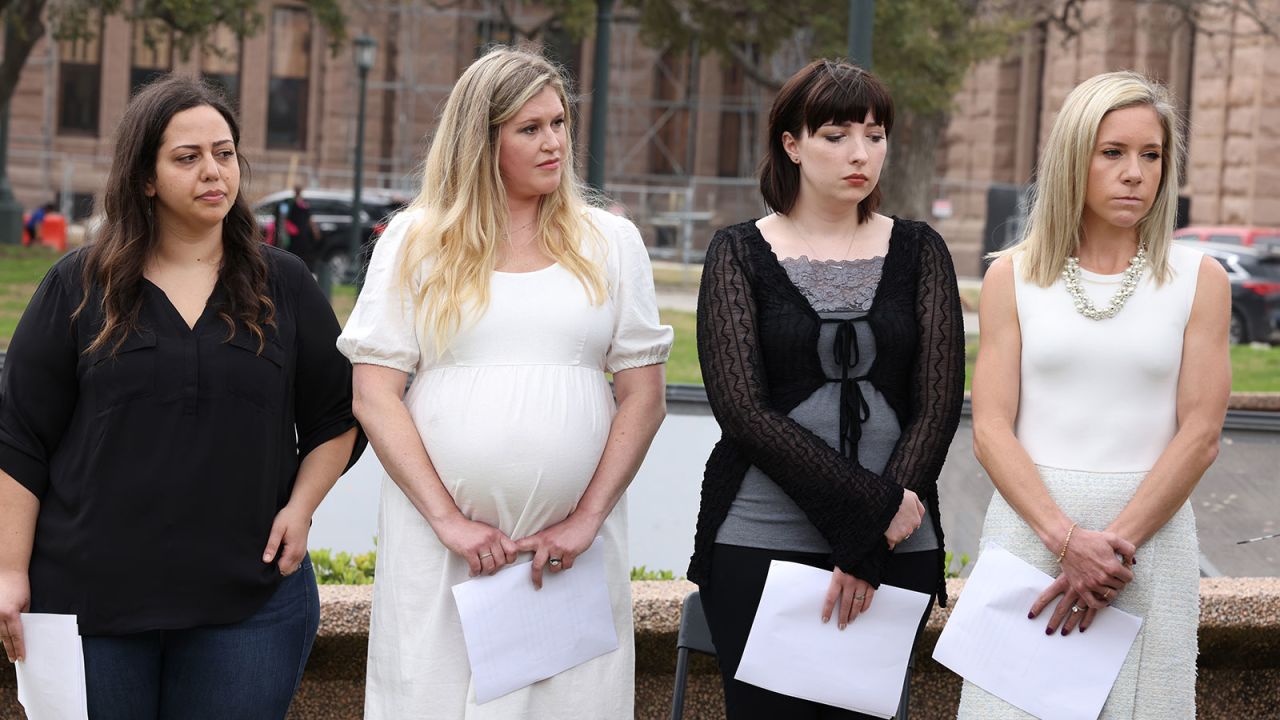CNN
—
Texas’ abortion restrictions – some of the strictest in the country – may be fueling a sudden spike in infant mortality as women are forced to carry nonviable pregnancies to term.
Some 2,200 infants died in Texas in 2022 – an increase of 227 deaths, or 11.5%, over the previous year, according to preliminary infant mortality data CNN obtained through a public records request. Infant deaths caused by severe genetic and birth defects rose by 21.6%. That spike reversed a nearly decade-long decline. Between 2014 and 2021, infant deaths had fallen by nearly 15%.
In 2021, Texas banned abortions beyond six weeks of pregnancy. When the Supreme Court overturned federal abortion rights the following summer, a trigger law in the state banned all abortions other than those intended to protect the life of the mother.
The increase in deaths could partly be explained by the fact that more babies are being born in Texas. One recent report found that in the final nine months of 2022, the state saw nearly 10,000 more births than expected prior to its abortion ban – an estimated 3% increase.
But multiple obstetrician-gynecologists who focus on high-risk pregnancies told CNN that Texas’ strict abortion laws likely contributed to the uptick in infant deaths.
“We all knew the infant mortality rate would go up, because many of these terminations were for pregnancies that don’t turn into healthy normal kids,” said Dr. Erika Werner, the chair of obstetrics and gynecology at Tufts Medical Center. “It’s exactly what we all were concerned about.”
The issue of forcing women to carry out terminal and often high-risk pregnancies is at the core of a lawsuit filed by the Center for Reproductive Rights, with several women – who suffered difficult pregnancies or infant deaths shortly after giving birth – testifying in Travis County court this week.
Prior to the recent abortion restrictions, Texas banned the procedure after 20 weeks. This law gave parents more time to learn crucial information about a fetus’s brain formation and organ development, which doctors begin to test for at around 15 weeks.
Samantha Casiano, a plaintiff in the suit filed against Texas, wished she’d had more time to make the decision.
“If I was able to get the abortion with that time, I think it would have meant a lot to me because my daughter wouldn’t have suffered,” Casiano said.
When Casiano was 20 weeks pregnant, a routine scan came back with devastating news: Her baby would be stillborn or die shortly after birth.
The fetus had anencephaly, a rare birth defect that keeps the brain and skull from developing during pregnancy. Babies with this condition are often stillborn, though they sometimes live a few hours or days. Many women around the country who face the prospect choose abortion, two obstetrician-gynecologists told CNN.
But Casiano lived in Texas, where state legislators had recently banned most abortions after six weeks of pregnancy. She couldn’t afford to travel out of the state for the procedure.
“You have no options. You will have to go through with your pregnancy,” Casiano’s doctor told her, she claimed in the lawsuit.
In March, Casiano gave birth to her daughter Halo. After gasping for air for four hours, the baby died, Casiano said during her testimony on Wednesday.
“All she could do was fight to try to get air. I had to watch my daughter go from being pink to red to purple. From being warm to cold,” said Casiano. “I just kept telling myself and my baby that I’m so sorry that this had to happen to you.”
Casiano and 14 others – including two doctors – are plaintiffs in the lawsuit. They allege the abortion ban has denied them or their patients access to necessary obstetrical care. The plaintiffs are asking the courts to clarify when doctors can make medical exceptions to the state’s ban.
Casiano and two other plaintiffs testified Wednesday about hoping to deliver healthy babies but instead learning their lives or pregnancies were in danger.

“This was just supposed to be a scan day,” Casiano told the court. “It escalated to me finding out my daughter was going to die.”
Lawyers representing the state argued Wednesday that the plaintiffs’ doctors were to blame, saying they misinterpreted the law and failed to provide adequate care for such high-risk pregnancies.
“Plaintiffs will not and cannot provide any evidence of any medical provider in the state of Texas being prosecuted or otherwise penalized for performance of an abortion using the emergency medical exemption,” a lawyer said during the state’s opening statement.
Kylie Beaton, another plaintiff, also had to watch her baby die. Beaton, who didn’t testify this week, learned during a 20-week scan that something was wrong with her baby’s brain, according to the suit.
The doctor diagnosed the fetus with alobar holoprosencephaly, a condition where the two hemispheres of the brain don’t properly divide. Babies with this condition are often stillborn or die soon after birth.
Beaton’s doctor told her he couldn’t provide an abortion unless she was severely ill, or the fetus’s heart stopped. Beaton and her husband sought to obtain an abortion out of state. However, the fetus’s head was enlarged due to its condition, and the only clinic that would perform an abortion charged up to $15,000. Beaton and her husband couldn’t afford it.
Instead, Beaton gave birth to a son she named Grant. The baby cried constantly, wouldn’t eat, and couldn’t be held upright for fear it would put too much pressure on his head, according to the suit. Four days later, Grant died.

Experts say that abortion bans in states like Texas lead to increased risk for both babies and mothers.
Maternal mortality has long been a top concern for doctors and health-rights activists. Even before the Supreme Court decision, the United States had the highest maternal mortality rate among wealthy nations, one study found.
Amanda Zurawski, the lawsuit’s lead plaintiff, testified Wednesday that her water broke 18 weeks into her pregnancy, putting her at high risk for a life-threatening infection. Zurawski’s baby likely wouldn’t survive.
But the fetus still had a heartbeat, and so doctors said they were unable to terminate the pregnancy. She received an emergency abortion only after her condition worsened and she went into septic shock.
Zurawski described during Wednesday’s hearing how her family visited the hospital, fearing it would be the last time they would see her. Zurawski has argued that had she been able to obtain an abortion, her life wouldn’t have been in jeopardy in the same way.
“I blame the people who support these bans,” Zurawski said.
Zurawski previously said the language in Texas’ abortion laws is “incredibly vague, and it leaves doctors grappling with what they can and cannot do, what health care they can and cannot provide.”
Pregnancy is dangerous, and forcing a woman to carry a non-viable pregnancy to term is unnecessarily risky when it’s clear the baby will not survive, argued Dr. Mae-Lan Winchester, an Ohio maternal-fetal medicine specialist.
“Pregnancy is one of the most dangerous things a person will ever go through,” Winchester said. “Putting yourself through that risk without any benefit of taking a baby home at the end, it’s … risking maternal morbidity and mortality for nothing.”
































